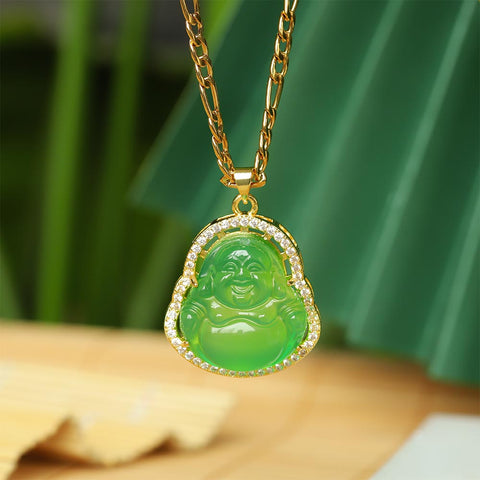What is imperial jade
Imperial Jade – An Introduction
“imperial jade” is the rare kind of jadeite that is semi-translucent and gives off a vibrant emerald green color. Imperial jadeite is formed from interlocking microcrystals and no two pieces have the same crystalline structure. It is not a single polished or cut crystal like a diamond or a ruby. This means that no two pieces of imperial jade jewelry are exactly the same, another reason why it is so highly valued in China. The best quality imperial jade has a vibrant green colour, is translucent and feels smooth to the touch.
Imperial Jade – the Quality
Colour – this is the most important quality and indicator of value. The most coveted quality of imperial jade is a very specific shade of green, therefore it's the most valuable. There are other shades of green jade including kingfisher jade, apple jade and moss-in-snow jade. When you are looking at a piece of imperial jadeite, please look for a strong, vivid, almost lively colour and ensure that it’s viewed under natural and artificial light.
Translucency – The highest quality Chinese jade jewellery is made from semi-transparent jade which has a slightly blurred look. When light hits the imperial jade stone, it penetrates deep into it giving it a rather ethereal, glowing appearance.
Texture – Imperial jadeite is smooth to touch because of the density of the interlocked crystals. It can be found in three main crystal sizes – coarse, medium and fine. The most popular size is fine-grained jade. They have an incredibly smooth feel and a very high lustre.
Imperial Jade – Spiritual Meaning
In China, imperial jade, is a symbol of status, of purity, of deep spirituality and of good health.
Imperial jade, a kind of gemstone that is revered in Chinese culture, is prized for its otherworldly magical qualities. It has a unique significance that is difficult for outsiders to understand.
Chinese culture associates imperial jade with a purity of spirit and clarity of thought. In his seminal work Shuowen Jiezi, Han dynasty scholar Xu Shen detailed the five virtues of imperial jade in the 2nd century:
- Benevolence – for its luster and brilliance
- Honesty – for its translucent texture
- Wisdom – for its tranquil and far-reaching tone
- Integrity and Bravery – for it may be broken but cannot be twisted
Imperial Jade – The Origins and History in China
Unlike nephrite, or ‘mutton fat’ jade which has been in China for thousands of years, the stunning imperial green jade known as jadeite was introduced from Burma (now Myanmar) as recently as the 18th century. The most of imperial jadeite comes predominantly from Myanmar (formerly Burma). There are other jadeite deposits in the USA, New Zealand, Guatemala, Japan, Kazakhstan and Italy.
From the discovery of the earliest nephrite jade deposits to the more recent arrival of imperial green jade, or jadeite, the significance of imperial jade to Chinese history and culture should not be underestimated. Chinese imperial jade jewellery has been made since the first deposits were found in Neolithic times and archaeological digs have uncovered imperial jade ornaments.
Chinese jade jewellery is as highly prized as the finest diamond, ruby and sapphire jewellery is in the West.
Imperial Jade – Techniques
Imperial green jade is used to make Chinese jade jewellery, ornaments, figurines, chopsticks, writing desk paraphernalia and even small pieces of furniture. As well as it being a precious stone in its own right, it’s also used as a decorative inlay in other works of art such as gilded bronze or gold jewellery. For the 2008 Olympic Games in Beijing, every medal – gold, silver and bronze – was embedded with a piece of jade.
In recent times, imperial green jade has faced increased competition for the attention of collectors and aesthetes from paintings, ceramics such as the stunning Ming dynasty antique blue and white vases and other Chinese antiques but it remains immensely popular thanks to its mystical allure.

